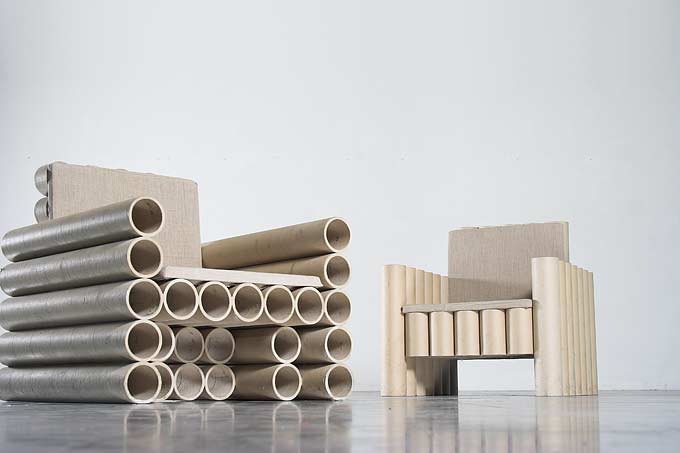Week 5: The James Dyson Foundation Challenge Cards

More than vacuum cleaners – although their vacuums ARE boss. More than super-fast hand dryers, bladeless fans, and space age heaters – the Dyson name goes along with creative, clever solutions to everyday problems. Hey! You’re clever! You’re creative, too. And you certainly live every day in the real world. So let’s start tackling some around-the-house engineering challenges, the Dyson way.
The James Dyson Foundation offers two kinds of challenge activities: 44 downloadable “challenge cards,” with shorter activities illustrating a specific concept, and six more open-ended video challenges, offering kids a chance to play around with the design process a bit more. One of each is highlighted below – so pick your path and let’s get started!
Challenge 1: Build a Cardboard Chair
Got any old boxes piling up in the recycling bin? Amazon packaging and old banana boxes will do, but so will cereal boxes, shoe boxes and any kind of cardboard you can find.
Using only cardboard – no glue, tape, or nails – you can make a chair you can really use! Discover the amazing strength properties of cardboard, and explore different design principles engineers use to make those super-sized diaper boxes able to stack sky-high.
- Open House: Sketch all the different types of chairs in your house you could use as a model. Which one will be most successful in a cardboard version?
- Mother Load: Test your chair’s load-bearing capabilities with differently-sized people in your house. Can your chair hold both kids and adults?
- Expand-O-Matic: Now that you’ve got some building tricks up your sleeve, choose another piece of furniture to recreate in cardboard. Bookcase? Coffee table? Hey, maybe even a cardboard vacuum!
DON’T SIT THIS ONE OUT: Info, tips, and more HERE.
Challenge 2: Underwater Volcano
Volcanoes are equal parts terrifying and amazing, but their underlying process is even more incredible. Convection – the way heat rises and falls in liquids and gases – governs not only how volcanoes erupt, but how storm systems move in the atmosphere, how ocean currents swell, and even how oatmeal bubbles in a pan!
The convection connection (that’s what we call it in the biz) is how loads of natural processes work – and we can model it with this nifty trick in Dyson Challenge Card #2. Using just five items (a big jar, water, food dye, string and a salt shaker) get up close and personal with the most important swirling current you’ll ever meet.
- STEAM-y Lava: Make a flip book illustrating what happens to your underwater volcano once you drop the hot salt shaker in the cold jar. Explosive!
- Weather or Not: Dig deeper and discover how convection is connected to the weather. Start out with the NOAA SciJinks website.
- Go Big, Already At Home: Your mission: create the most dynamic eruption possible with your underwater volcano. Hint: what makes the water inside the salt shaker different from the water outside it?
CONVECT THE DOTS: Info, tips and more HERE.
Hands-on science lets kids explore their passions and interests. After a STEM-filled spring, keep the fun going all summer long and check out these Hope Summer Science Camps. Enroll today!
- Prehistoric Planet (June 22-26, grades K-2)
- Exploring Energy (July 20-24, grades 3-5)
- Programming and Circuits (June 22-26, grades 6-9)
- EV3 Mindstorms Challenge (July 6-10, grades 6-12)

